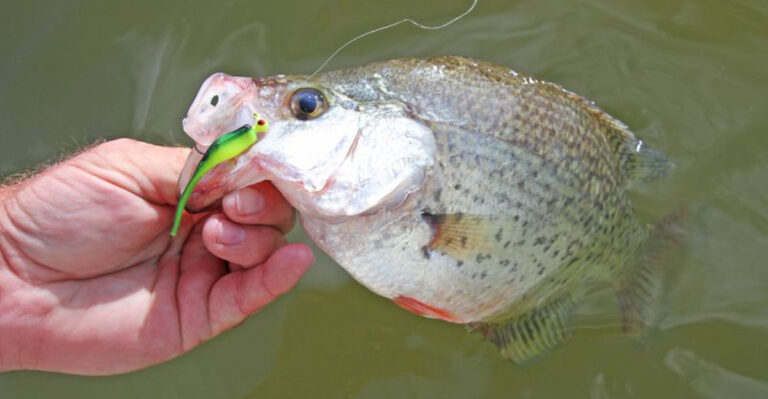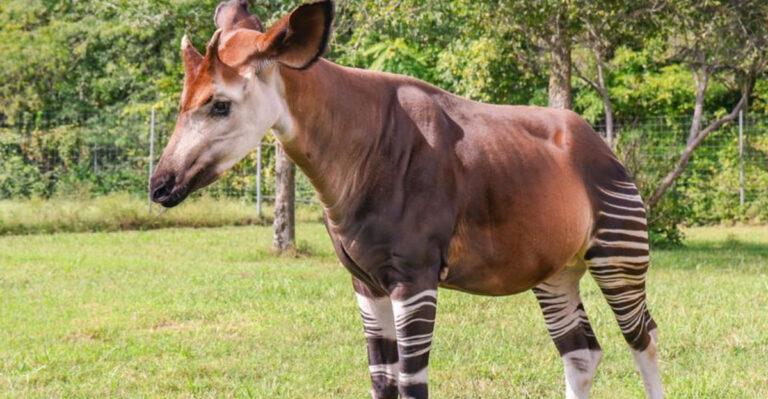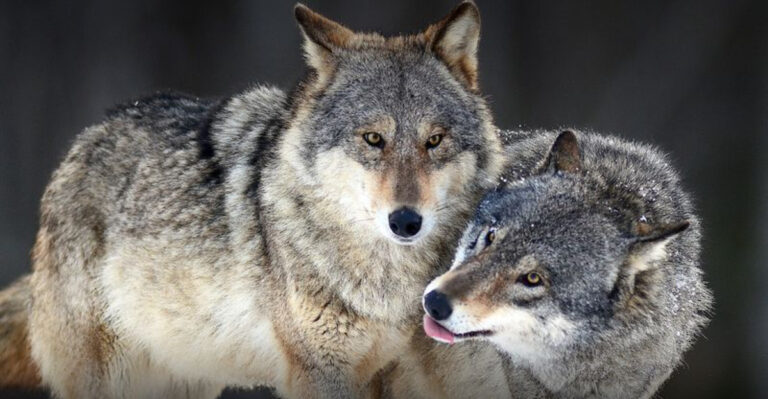This Invasive Frog Can Swallow Baby Turtles Whole And It Blows My Mind
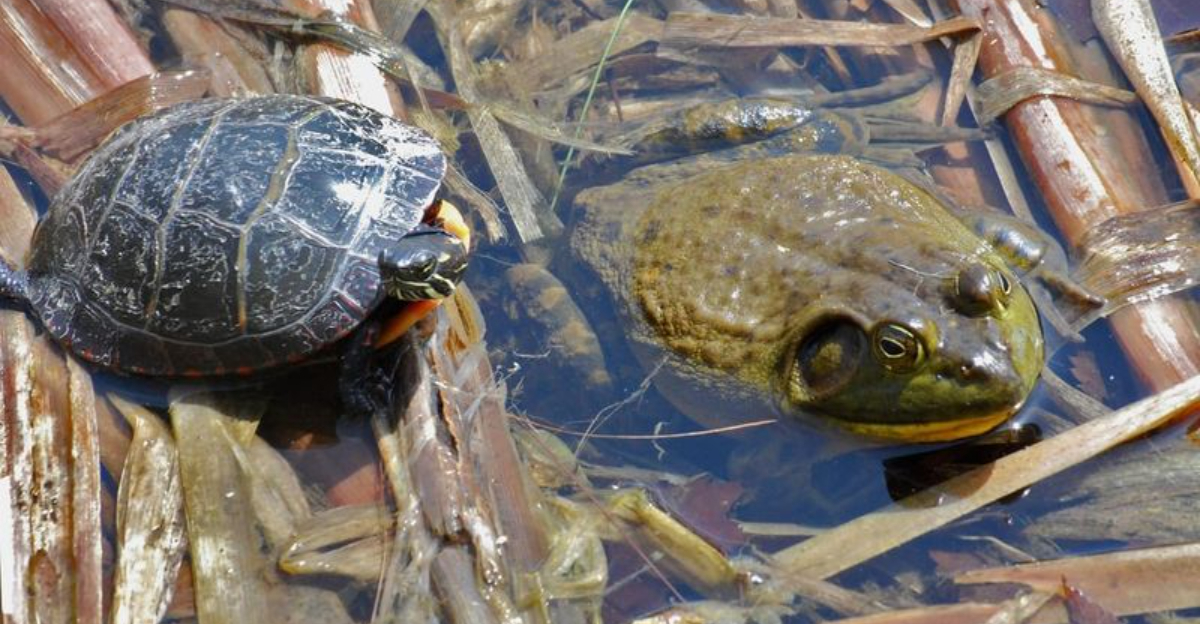
Meet the American bullfrog, nature’s ultimate eating machine with an appetite that knows no bounds. These massive amphibians can grow larger than your hand and will devour almost anything they can fit in their mouths – including baby turtles!
Originally from eastern North America, these frogs have invaded ecosystems worldwide, creating ecological nightmares wherever they go.
The American Bullfrog’s Invasion
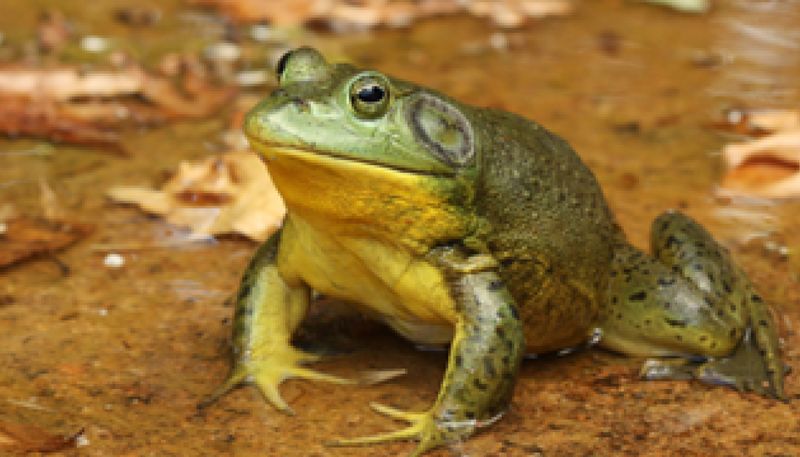
Silent and deadly, American bullfrogs have conquered waterways across six continents. These green giants didn’t spread by accident – humans introduced them for food and pest control.
Now they’re wreaking havoc in places they were never meant to exist. Their population explosion threatens entire ecosystems as they consume everything from insects to small vertebrates.
What Makes American Bullfrogs Such Effective Predators?
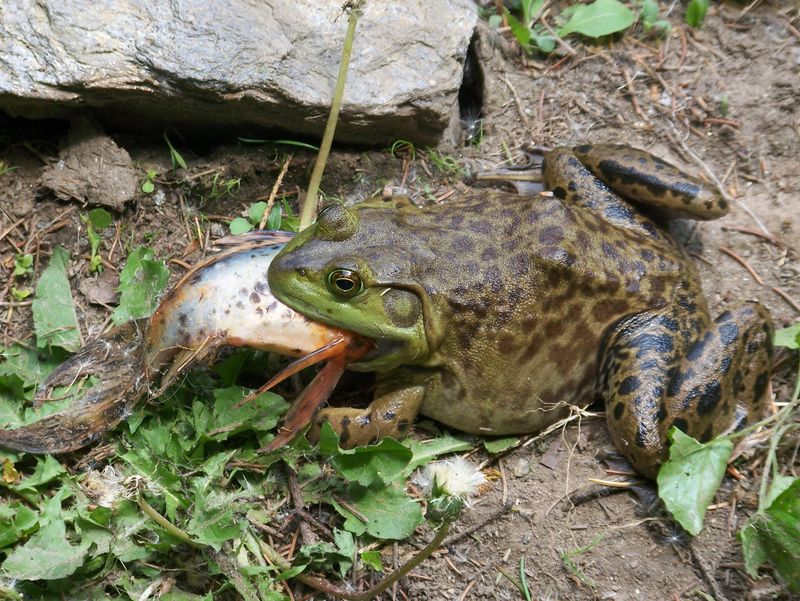
Imagine a mouth so large it can engulf prey nearly half its body size! American bullfrogs possess jaws that unhinge to accommodate surprisingly large meals.
Their lightning-fast tongues strike before victims can react. Coupled with their stealthy hunting style and indiscriminate appetite, these frogs become living vacuum cleaners in any habitat they invade.
A Frog That Can Eat Baby Turtles
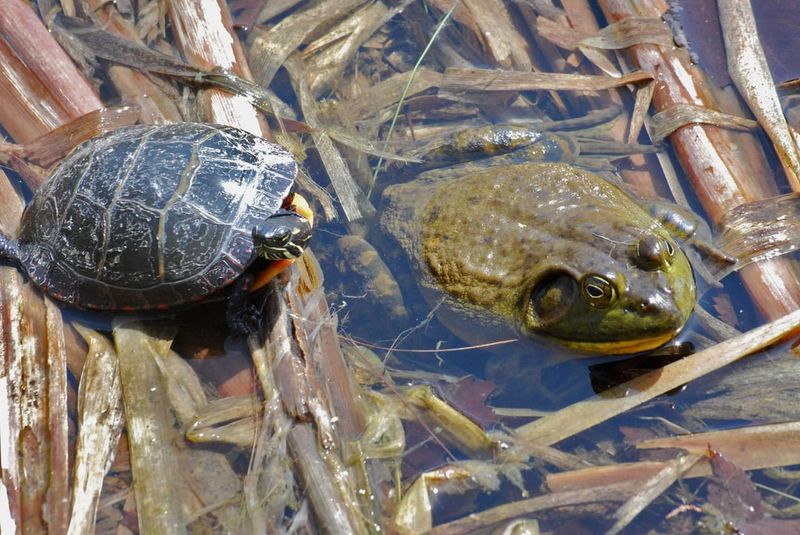
Witnessing a bullfrog swallow a baby turtle is like watching a magic trick gone wrong. The frog’s expandable stomach stretches to accommodate the entire shell and struggling turtle.
Scientists have documented this shocking behavior across multiple regions. For newly hatched turtles making their first journey to water, these frogs represent an unexpected and devastating threat.
Introduction Of The American Bullfrog To California
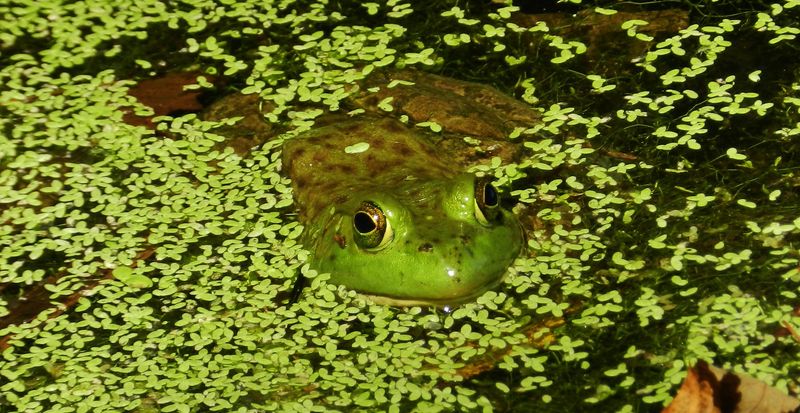
Back in the 1950s, someone thought releasing bullfrogs in Yosemite was a brilliant idea. Maybe they wanted frog legs for dinner or thought they’d control insects.
Whatever the reasoning, it backfired spectacularly. Within twenty years, these amphibian invaders had established breeding populations throughout California’s waterways, forever changing the local wildlife balance.
The Problem With Invasive Species
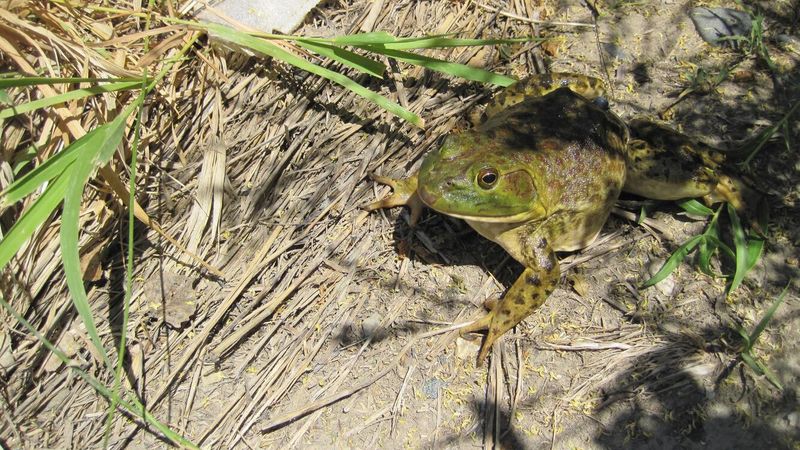
Nature operates like a finely tuned orchestra – until someone introduces a tuba player who won’t follow the sheet music. Bullfrogs represent that chaotic element, disrupting relationships between species that evolved together over millennia.
They outcompete native frogs for food while simultaneously eating them. This double-whammy effect accelerates biodiversity loss in affected areas.
The Impact On Native Species
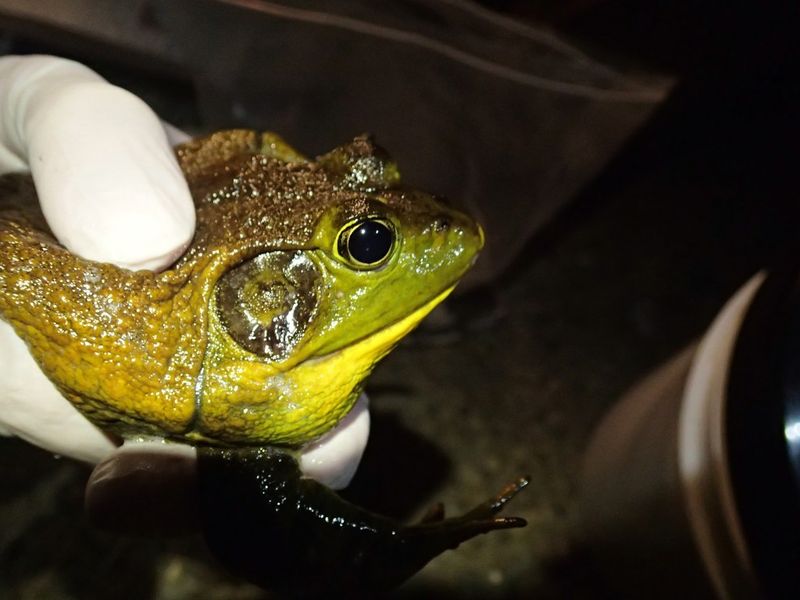
California’s red-legged frogs once thrived throughout the state. Today, they’ve vanished from 70% of their historic range – largely thanks to bullfrogs.
The story repeats with countless species: western pond turtles, California tiger salamanders, and native fish. Bullfrogs don’t just eat these creatures; they transmit deadly diseases while showing immunity themselves.
Bullfrogs Vs. Native Turtles
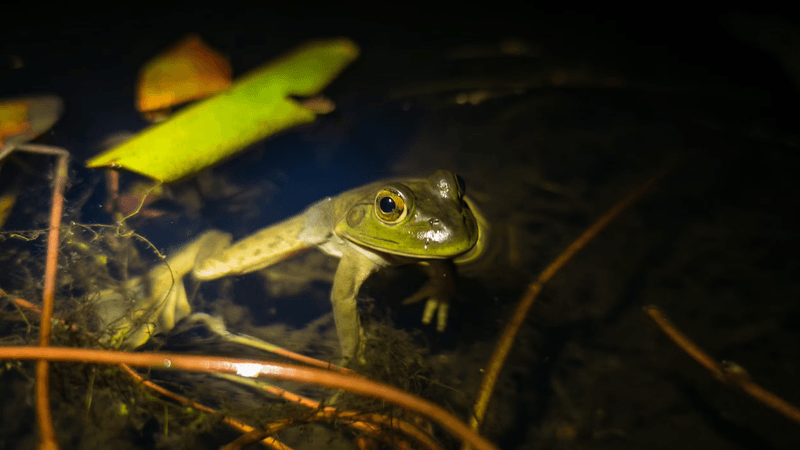
Baby turtles emerge from sandy nests, instinctively heading toward water – straight into danger. Their quarter-sized shells offer zero protection against a bullfrog’s gaping maw.
The turtle’s slow pace makes them easy targets. Conservation efforts now include protecting turtle nesting sites and creating safe corridors to water, specifically to avoid bullfrog ambushes.
Predator-Prey Relationships Disrupted
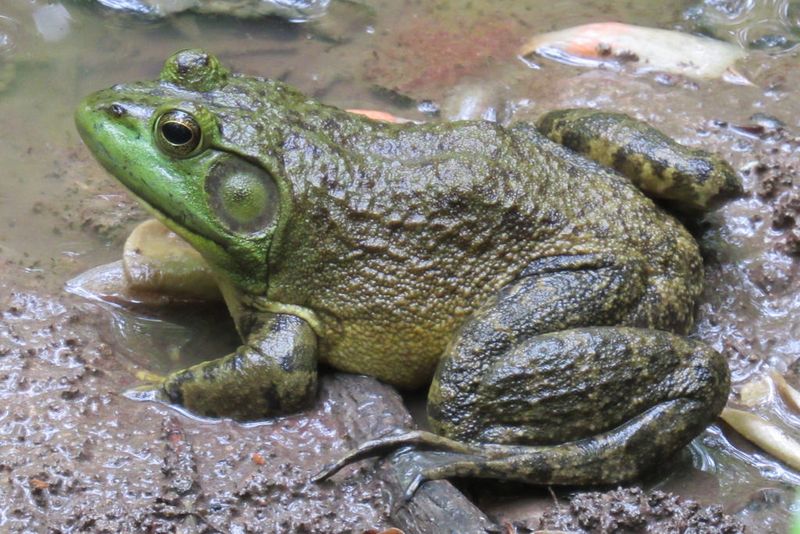
Mother Nature spent millions of years perfecting the balance between hunters and hunted. Bullfrogs shatter this equilibrium in a single generation.
When they devour intermediate predators like garter snakes, populations of smaller creatures explode. Meanwhile, larger predators that relied on native frogs find their food source replaced by bullfrogs too large to consume.
Why Bullfrogs Are So Hard To Control
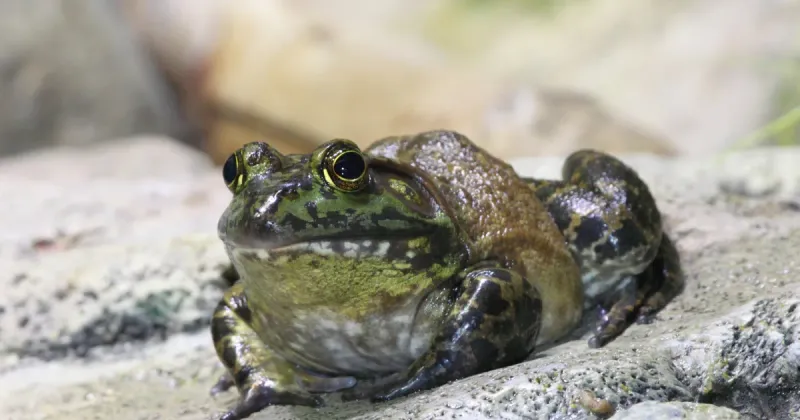
Female bullfrogs lay up to 20,000 eggs per clutch – that’s like releasing an army with each successful breeding pair! Their tadpoles taste terrible to predators, allowing most to reach adulthood.
They can travel overland during rainstorms to colonize new ponds. Even worse, they’ve developed resistance to many control methods, making eradication nearly impossible once established.
How Bullfrogs Are Spreading Globally
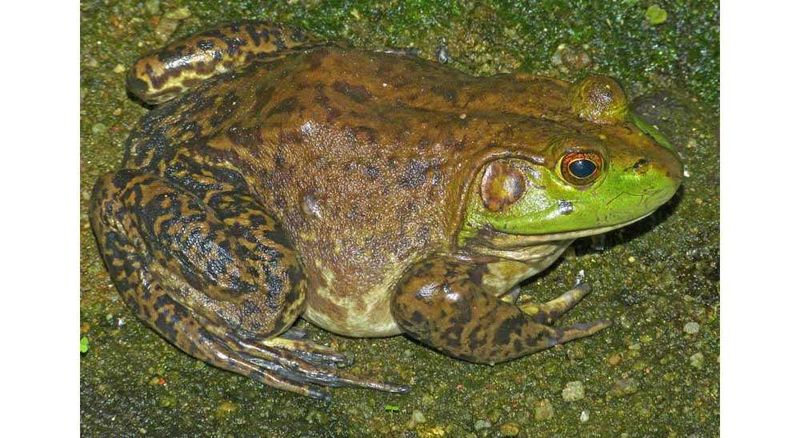
From Japan to Brazil, bullfrogs have gone international! The pet trade accidentally releases them, while some countries deliberately imported them for frog farming.
Climate change expands their potential range as previously inhospitable areas become suitable habitat. Their adaptability to polluted waters gives them an edge over native species that require pristine conditions.
Efforts To Control The Bullfrog Population
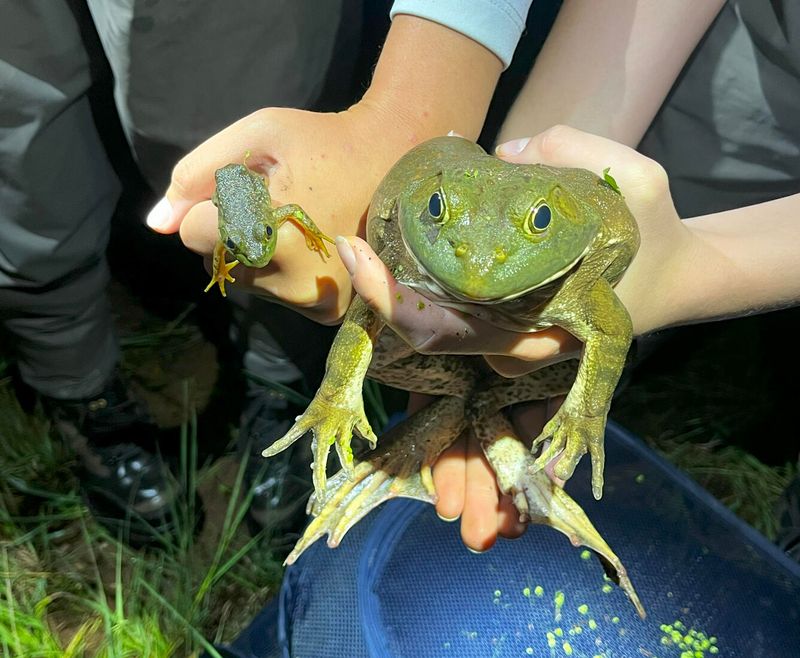
Wildlife managers wade through ponds at night, armed with flashlights and nets on a mission to capture these elusive invaders. Some regions have introduced bullfrog-specific traps that avoid harming native species.
Citizen science programs train volunteers to identify and report sightings. Despite these efforts, complete eradication remains an uphill battle requiring sustained commitment and innovative approaches.
The Future Of Bullfrogs And Conservation Efforts
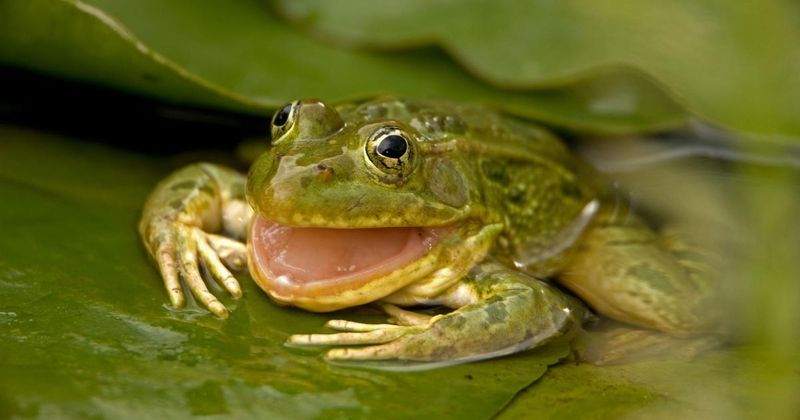
Hope emerges through targeted conservation strategies focusing on creating “bullfrog-free zones” around critical habitat. New environmental DNA techniques can detect bullfrogs before they become established.
Researchers are developing bullfrog-specific control methods that won’t harm native wildlife. The battle continues between this voracious invader and those fighting to preserve biodiversity in our ponds and wetlands.



